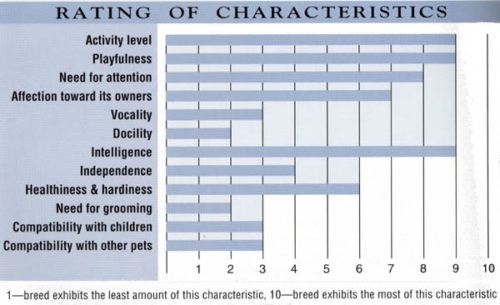Bengal Cat
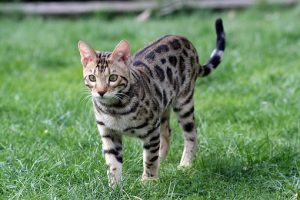 To understand your Bengal cat
To understand your Bengal cat
it is important to understand that the primary contributor to this breed is the Asian Leopard Cat, or Bengalensis – so named because the first known member of this cat was found swimming in the Sea of Bengal. The reason that is important is because of the unusual qualities of this breed.
The Asian Leopard Cat is found in Southern Asia and has adapted to both highlands and lowlands. It is comfortable in mountains, forests and plains as well as near water and is a great swimmer. It climbs well, runs fast, lives near human habitation and deep in the wild. It is reported that the Asian Leopard cats form breeding pairs, with the male assisting in the rearing of young.
Put otherwise, the Bengal cat’s primary parent, the Asian Leopard Cat is an extraordinarily capable cat with numerous physical and mental abilities that have contributed to its survival as well as making it a desirable breed/hybrid for pet owners. It is also extraordinarily shy of humans and these two attributes – the breed’s capabilities and its shyness – are at the core of the Bengal breeding efforts. The first attribute – their capability, (along with their wild good looks) is why they have thrived and continue to be bred. The second – their shyness, is assiduously bred out of them.
The Bengal cat was first created by crossing the Asian Leopard with ordinary house cats – even cats off the street, and this began their modification, particularly, of their reclusiveness. Because cat associations (and most people) don’t want a cat that disappears as soon as you or a guest shows up, they require all Bengal cats to be fourth generation Bengal to Bengal offspring and it is the only breed for which the description prescribes a temperament requirement. Most breeds specify physical characteristics only but the Bengal cat must also be friendly, and not to only one person, but generally.. (Recall that the true nature of the Asian Leopard Cat is to be seriously reclusive.)
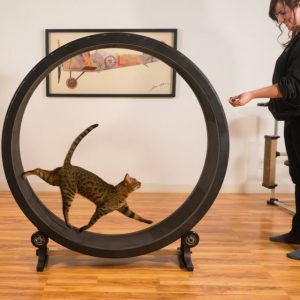
And friendly they have become but don’t think your Bengal cat is going to be a soothing, calm, couch ornament. Oh no. If you don’t want an interactive cat you don’t want a Bengal because they will need, want, insist on being a part of your life. They will follow you as a dog will, they are curious, interested, intelligent and they love to play. This is why they like kids and dogs. Kids and dogs are always playing and your Bengal enjoys engaging with them, as well as with toys like cat wheels. The Bengal needs and craves frequent stimulation. It is as if, instead of taking the wild out of a cat and bringing him home, we introduced domesticity into a cat and left him in the wild. Only he’s home.
The Bengal is prone to two afflictions – a heart problem and an eye problem but dedicated breeders are very careful to test for, monitor and not allow those genetically induced traits to propagate. If you are interested in buying this breed ask about these as well as the breed-line. Bengals that are less than 4 generations of Bengal to Bengal breeds are readily available but not show-able, if that is your interest.
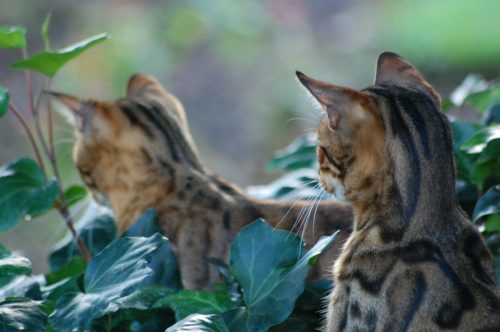
Breeders recommend a raw diet for this cat for optimum health. This can consist of premium grade ground chicken thighs, including the bone, chicken hearts and livers, raw eggs and vitamins. Do a little research for more information on this.
So what about looks? The Bengal looks like a small leopard – one of her primary appeals. They are long, strong boned and muscular. The spotting style most valued is with small rosettes in a redder circle with a clear definition from the background fur color, in horizontal patterns . The head is wedged and rounded with prominent whisker pads, pronounced cheekbones and small ears wide at the base, rounded at the top. Their fur is luxurious and very soft.
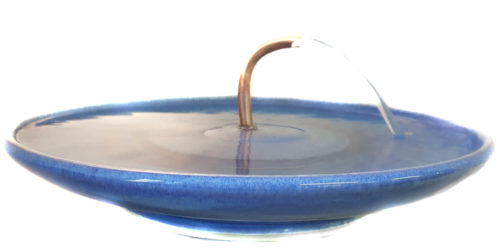 As for a cat water fountain for this cat you need to be a little careful. Due to the inquisitive, active nature of this cat choose a cat fountain that is not easily dismantled. Because the Bengal Cat is a shorthair a bubble-up will work well and to add a little excitement without incurring any risk of damage, add a Serenity Flow. You might want to keep it on a low setting though as he may want to put his paws or nose in the flow so consider putting a matt under your cat fountain to absorb splash. He’ll love it.
As for a cat water fountain for this cat you need to be a little careful. Due to the inquisitive, active nature of this cat choose a cat fountain that is not easily dismantled. Because the Bengal Cat is a shorthair a bubble-up will work well and to add a little excitement without incurring any risk of damage, add a Serenity Flow. You might want to keep it on a low setting though as he may want to put his paws or nose in the flow so consider putting a matt under your cat fountain to absorb splash. He’ll love it.
Information for this article was taken from Barron’s Encyclopedia of Cat Breeds, Desmond Morris’s Cat World, Natoli’s Cats of the World and from Leopard Realm Cat Breeder.
